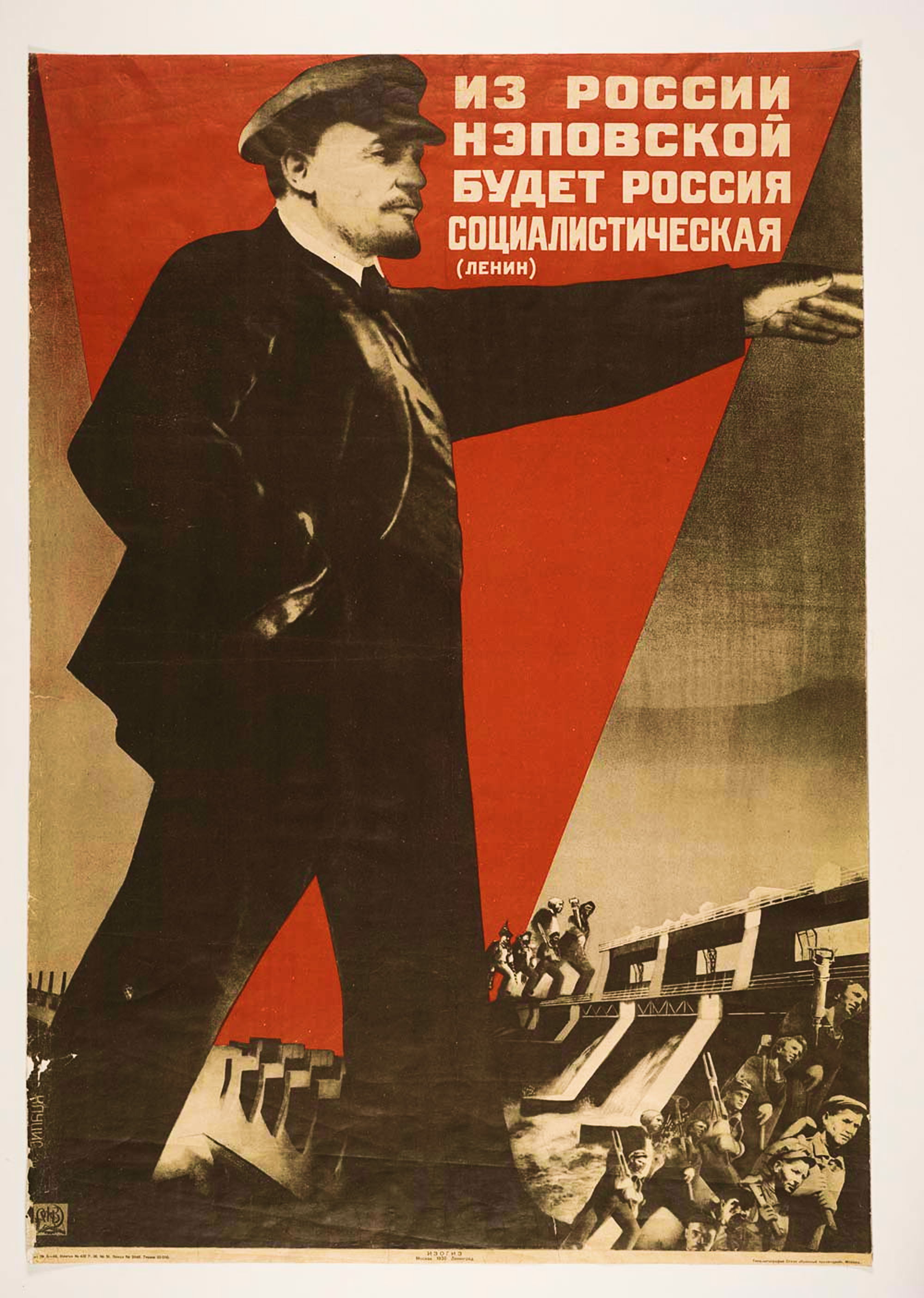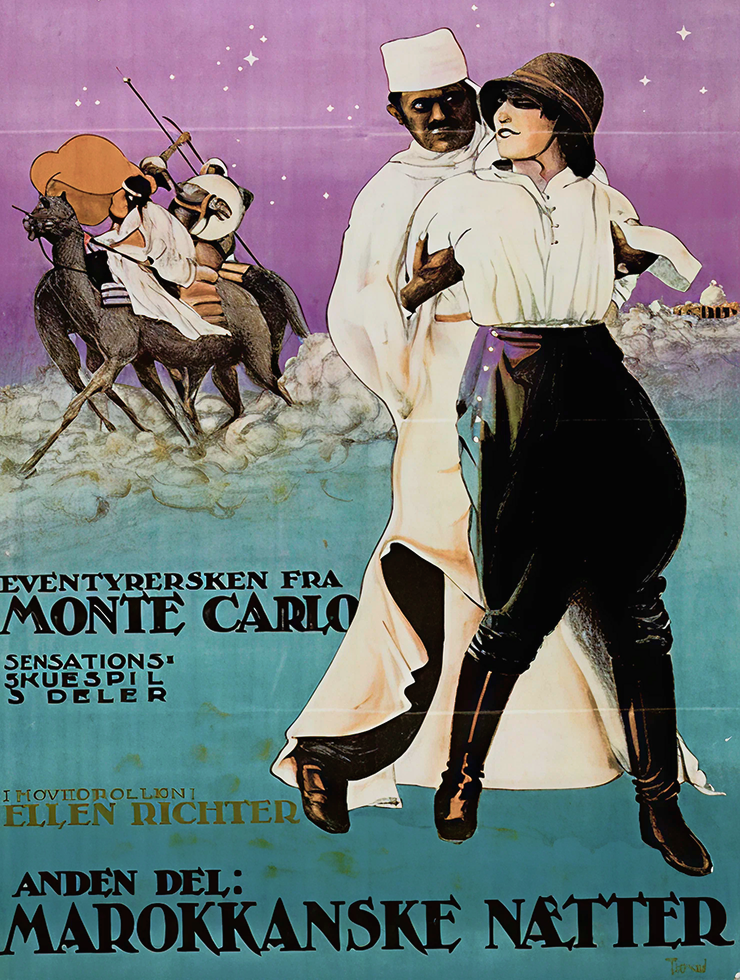The Movies in Communist Belarus
The NEP & the first party purges
1921
As 1921 dawned, the Soviet Socialist Republic of Belarus (SSRB) was organizing itself after six years of fighting. Even though the Belarusian government often had to follow Moscow’s wishes, it began to exert local control in many areas, including the cinema.
A Narkompros Journal from January-February 1921, that lists a total of 125 “programs,” of which 98 fell under the category “various content.” It did not say, by name, what films were shown. More interesting, the journal lists 5 cinemas in action: Red Star, International, Culture, Commune, and Spartak.1 This tells us the cinemas were renamed in less than six months after the end of the fighting in July 1920 (with the exception of some fighting in the south, near Pinsk). Other documents show the Giant (renamed as Red Star), Eden (renamed as International), and Modern (renamed the Culture)2 were in use, and renaming them was clearly a high priority. Were the other two theaters the former Lux and the former Illusion? We have no evidence.
Vitold Ashmarin, then the editor of the newspaper Zvyezda (Star) was unhappy with the films shown by the cinemas. According to film scholar Natalie Ryabchikova, Ashmarin had been associated with Russian films from pre-revolutionary times.3 He was also, at the time he wrote the article, the editor of Zvyezda.4 On February 15, 1921, Ashmarin complained about “The Screens of Belarus.” He wrote that all that the Belarusian theaters are showing are “scraps of old, worn-out reels, meagerly supplied by the central authorities.”
Portrait (monotype) of Vitold Akhramovich by Anatoly Trapani, 1915.
Source: Vitold Akhramovich (Ashmarin) and Lev Kuleshov: At the inception of Russian film theory, 2021.
Interestingly, Ashmarin adds “The production of our own films has nearly ceased, due to a shortage of film stock and chemicals.” This is a rare instance of an indication of indigenous film production in Belarus. Near the end, Ashmarin tells readers who is in charge of the movies in the republic. “Our People's Commissariat of Education (Narkompros) has a subdepartment for photo-cinematography, which currently distributes old reels to cinemas with great stinginess. Yet this subdepartment could evolve into a fully independent division, organize modest local production, contribute something to the center, and in return receive a greater quantity and better quality of film stock.” So, from Ashmarin we can now presume that theaters in the SSRB were operating, that films were hard to come by, and that a Department in the Narkompros was taking the blame.5
Six months later, in August 1921, Lenin established the New Economic Policy, or NEP. The NEP allowed businesspeople and some farmers to make profits. Lenin believed that the incentive of profit would spur an economic revival. History proved him right.
This poster was actually printed in 1930, after the NEP had been abandoned. It says, “From NEP Russia there will be Socialist Russia”.
Source: By WillZ8800 — Own work, CC BY-SA 4.0, via Wikimedia Commons.
Film historian Kristin Thompson describes what happened once the NEP was in place:
Kristin Thompson
Thompson and others note that those private firms had a profit incentive which set up two categories: the haves and the have-nots. Historian A.M. Yevtushenko writes that while some movies were shown for free in workers’ and army clubs, they tended to be documentaries or agit-prop. Private theaters had better, more popular films and therefore could charge admission fees.7
Thompson cites early Soviet film historian Nikolai Lebedev, who wrote that the Communist Party missed an opportunity to set Soviet cinema on a sound financial basis with the NEP.
Nikolai Lebedev
According to historian Peter Kenez, in late 1921, the first commercial cinema re-opened in Moscow. Soon there were many. With the NEP in place, theater owners managed to sneak in dozens of features from outside of the country.9 Kenez also wrote that famous German films like The Cabinet of Dr. Caligari (1920), were shown in Moscow soon after they were made.10 It was this kind of thing that historian Nikolai Lebedev railed against. He wrote "the Photo and Cinema Department of the People's Commissariat of Education, created under the conditions of war communism, and its local bodies proved powerless to cope with the market forces.” 11
Das Cabinet des Dr. Caligari/The Cabinet of Dr. Caligari, Decla-Bioscop AG
Lebedev named other films, too: “The windows of movie theaters are full of the titles of meaningless films of German, French, and American production: The Adventuress of Monte Carlo, The Mystery of the Egyptian Night, The House of Hate, The Bride of the Sun, In the Slums of Paris, The Five Rothschilds, In the Claws of the Beast, etc., etc.” 12
The Adventuress of Monte Carlo, 1921.
Source: Unknown Fair use, Wikimedia Commons.
House of Hate, 1918.
Source: by Unknown author, Internet Archive, Public Domain, Wikimedia Commons
On December 17, 1920, the Belarusian constitution had been amended to create the Central Executive Committee (Ts.I.K.) and the Council of People's Commissars (Sovnarkom). Aleksandr Charviyakov was elected chairman of both the Ts.I.K. and the Sovnarkom.13 Wilhem Knorin was named First Secretary of the Central Bureau of the Belorussian Communist Party.14 Vsevolod Ihnatouski was head of the Commissariat of Education, which controlled cinema.15
Vilhelm Knorin, 1928.
Source: Public domain, via Wikimedia Commons.
Vsevolod Ihnatouski.
Public domain, via Wikimedia Commons.
As the Belarusian Communist Party was reforming itself, the government prepared for the first purge of Communist Party members. The European Jewish Archives Portal of the website Yerusha, supported by the Rothschild Foundation Hanadiv Europe, writes:
County commissions for the purpose of evaluating, reviewing, and purging personnel of the Communist Party of Belorussia were established per decisions adopted by the IV Congress of the Communist Party (Bolsheviks) of Belorussia (Minsk, 25 February – 2 March 1921).
The commissions were instructed to “improve party ranks” by taking measures to verify party members’ compliance with their requirements, and to monitor the actions of individual members as well as party collectives; receive and hear complaints against communists and testimony as to their untoward actions; and see to the preservation of communist ethics on the part of members of the Communist Party of Belorussia.
Most urgently, the commissions were supposed to discover and expel from the party “kulak-owner and bourgeois elements among the peasants and county townspeople,” as well as employees of Soviet agencies who were of a “bourgeois” intelligentsia background or had formerly belonged to since-liquidated political parties and unions.16
Yerusha: European Jewish Archives Portal
Historian Ivan Lubachko wrote that, between August 15 and October 25, 1921, 1,495 members (about 25 percent of the total membership) were removed. An official Party statement said they expelled, "rascals, bureaucrats, dishonest or wavering Communists, and Mensheviks at heart." During Lenin's time, however, those expelled from the Party usually were left free.17
Perhaps this is the time to link to one of the greatest American movies that, according to film historian Vance Kepley, Jr. was shown in Soviet Russia as early as 1918: D.W. Griffith’s two hour and 46 minute spectacle, Intolerance.18
1 Школа и культура Советской Белоруссии /School and Culture of Soviet Belarus № 1-2 1921, Январь-Февраль /No. 1–2, 1921 January–February НАЦИОНАЛЬНАЯ БИБЛИОТЕКА БЕЛАРУСИ/National Library of Belarus 623ca8eda1e2b124f43a0b5dc611d57d.pdf Accessed 3 Oct 2025
2 Национальный архив Республики Беларусь (НАРБ)/National Archives of the Republic of Belarus (NARB) фонд/fond. 42 опис/Inventory 1, дело/file133 листу. pp 15-15b.
3 Рябчикова Н.С./ Ryabchikova NS, Ранние киноопыты Витольда Ахрамовича/ Early Film Work of Vitold Akhramovich. 1913-1918 191 3-191 8 гг. Театр. Живопись. Кино. Музыка 2022. №2. /Theatre. Fine Arts. Cinema. Music. 2022, no. 2 С. 81 -103/ pp. 81-103. DOI: 10.35852/2588-0144-2022-2-81-103; pp. 61–79; Рябчикова Н. С./ Ryabchikova N. S., Витольд Ахрамович (Ашмарин) и Лев Кулешов: у истоков русской кинотеории/ Vitold Akhramovich(Ashmarin) and Lev Kuleshov: At the inception of Russian film theory.Театр. Живопись. Кино. Музыка. In: Theatre. Fine Arts. Cinema. Music 2021, no. 3,/ 2021. № 3. С. 61–79./ pp. 61–79.DOI: 10.35852/2588-0144-2021-3-61-79.
4 О чем просил Сталина один из основателей БелТА перед смертью/ What did one of BelTA's founders ask Stalin for before his death? Минск Новости/Minsk News 7 May 2019 https://minsknews.by/o-chem-prosil-stalina-odin-iz-osnovateley-belta-pered-smertyu/ Accessed 27 Sept 2025.
5 Ашмарин, В./Ashmarin, V., Экраны Белоруссии/The Screens of Belarus, Звезда/Star No. 37 15 февраль 1921/15 Feb 1921, Президентская библиотека Республики Беларусь/Presidential Library of Belarus.
6 Thompson, Kristin, “Government Policies and Practical Necessities in the Soviet Cinema of the 1920s,” Red Screen: Politics, Society, Art in Soviet Cinema edited by Anna Lawton Routledge, 1992.
7 Евтушенко, А.М./Yevtushenko, A.M., «Русское кино периода НЭПа в аспекте государственного и партийного строительства»/“Russian Cinema of the NEP Period in the Aspect of State and Party Building” Vector of TSU Science https://www.vektornaukitech.ru/jour/article/view/516, p. 112 Accessed 15 Mar, 2025.
8 Лебедев Николай/Lebedev,Nikolai Kino: Ego kratkaia istoria, ego vozmozhnosti, ego stroitel'stvo v sovetskom gosudarstve (Moscow: State Publishers, 1924), p. 97. cited by Thompson, Kristin, “Government Policies and Practical Necessities in the Soviet Cinema of the 1920s,” Red Screen: Politics, Society, Art in Soviet Cinema edited by Anna Lawton Routledge, 1992 pp. 49-63.
9 Kenez, Peter Cinema and Soviet Society: From the Revolution to the Death of StalinI.B. Tauris 2000, p. 35.
10 Ibid.
11 Лебедев, Н.А./Lebedev, N.A. Очерки истории советского кино/ Essays on the History of Soviet Cinema Искусство/Art Publishing House 1965, p. 143.
12 Лебедев, Н.А./Lebedev, N.A., p. 146.
13 Ocherki po istorii gosudarstva i prava Belorusskoi SSR/ Essays on the history of the state and law of the Byelorussian SSR Minsk, 1958, P· 41; Ibid; Bol'shaia sovetskaia entsiklopediia/Great Russian Encyclopedia 1st ed. (Moscow, 1929-1948), 61:195; Ocherki po istorii/Outline on History p. 41; S’ezdy Sovetov SSR/Congress of Soviets, 2:251-52. Cited by Lubachko, Ivan S. Belorussia Under Soviet Rule, 1917-1957, University of Kentucky Press, 1971, p. 49.
14 Lubachko, p. 50.
15 “Vsevolod Makarovich Ignatovsky” Faculty History of the BSU https://hist.bsu.by/en/honorary-callery-of-the-faculty-of-history/7405-vsevolod-makarovich-ignatovsky-19-04-1881-04-02-1931.html#gsc.tab=0 Accessed 26 Mar 2025. (English language page)
16 "Igumen County Commission to Purge the Communist Party (Bolsheviks) of Belorussia." Yerusha: European Jewish Archives Portal Rothschild Foundation Hanadiv Europe, https://www.yerusha-search.eu/viewer/metadata/JTS-2564/ Accessed 17 Sept. 2025.
17 Istoriia BSSR, 2nd ed. (Minsk, 1961), 2:184 and Борис К. Маркиианов / Boris K. Markianov, Борьба Коммунистической Партии Белоруссии за укрепление единства своих рядов в 1921–1925 гг./ The struggle of the Communist Party of Belarus to strengthen the unity of its ranks in 1921–1925 Minsk, 1961 p. 64. All cited by Lubachko, p. 108.
18 Kepley, Vance Jr. “Intolerance and the Soviets: A Historical Investigation.” Inside the Film Factory: New Approaches to Russian and Soviet Cinema edited by Richard Taylor and Ian Christie, Routledge, 1991, pp. 51–59.






